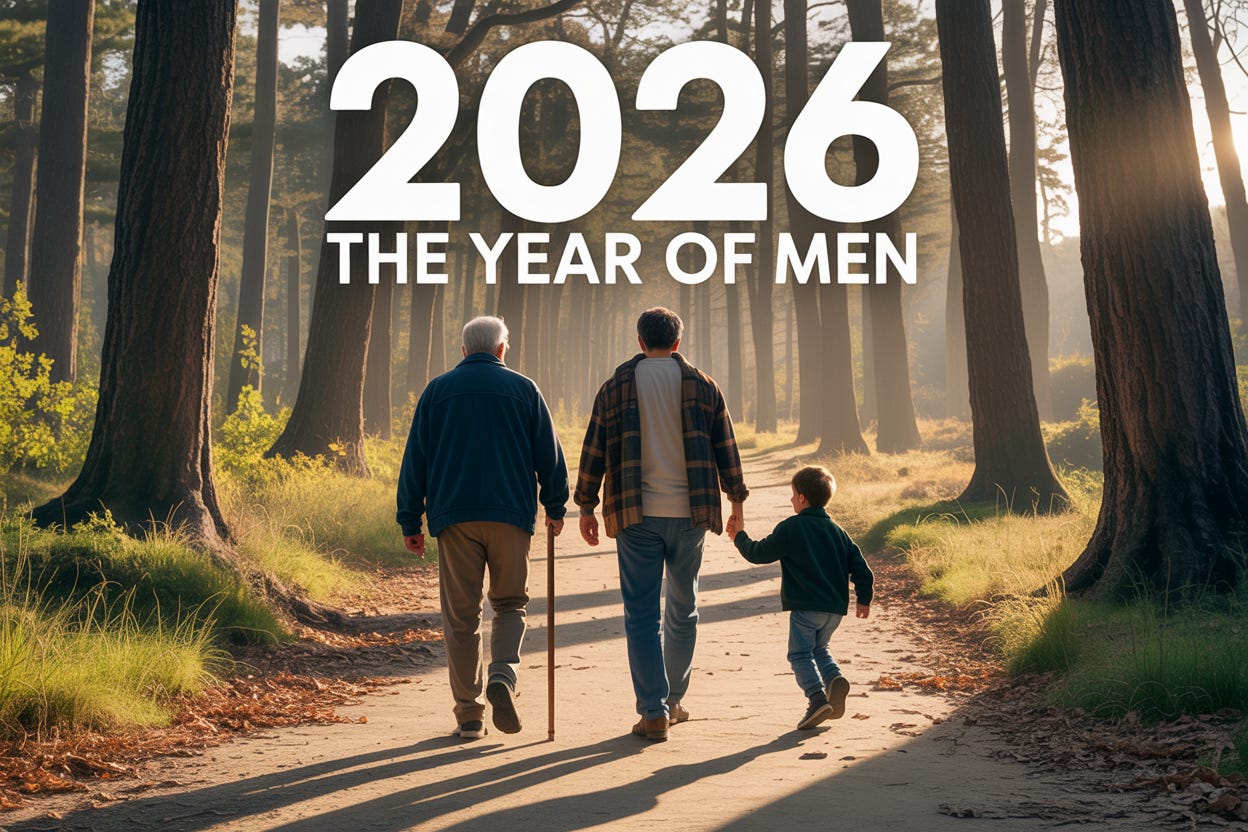
This series started off with a surprisingly accurate definition of gynocentrism by chatgpt. The next post showed that most of us have at least a little gynocentrism within us. We have also seen in the next post how gynocentrism is a very powerful force that runs silent and deep in our culture. People are simply unaware of its presence. We have seen how gynocentrism offers women protection and access to resources. We have also looked at how women have traditionally used gynocentrism as leverage in relationships and how feminism turned everything upside down by weaponizing gynocentrism. Now we are going to have a look at the reasons men don't fight back. Men, as a group, have been attacked for over 50 years, and yet there is very little response from them. We will look first at the traditional leveraging of gynocentrism by women and how that discouraged men in fighting back. Let's get started.
From my experience I've learned that men tend to weigh the pros and cons of giving feedback, especially when it could lead to conflict. This is a key reason men often choose not to confront feminism or even challenge their wives. If a man doesn’t see a positive outcome that outweighs the potential negative consequences, he's more likely to remain silent. This is just one factor behind men's reluctance to push back.
Another factor is the use of false accusations by feminists to undermine and neutralize men. False accusations are particularly damaging because they are impossible to disprove. When men deny such accusations, it can make them appear more guilty than if they had said nothing. Men are aware of this dilemma, and many will avoid responding to false claims to sidestep the implication of guilt. Feminists have long employed this tactic, beginning with labeling men as "male chauvinist pigs," followed by accusations of patriarchy, oppression of women, being deadbeat dads, wife beaters, and eventually branding men as "toxic." We will delve deeper into these strategies later in this series on why men don't fight back, but it’s important to highlight this issue now to understand the full scope of the problem.
Men’s reluctance to engage in conflict that lacks a clear benefit is closely tied to another dynamic: their position in a status-driven hierarchy. Men compete for status, which enhances their standing within the male hierarchy and improves their chances of attracting high-status females. A man's ability to provide for and protect women is central to his social standing, and the greater his ability to do so, the higher his status will be, and the more attractive he becomes to potential partners. Thus, men are biologically and socially conditioned to demonstrate their capacity to provide and protect. This helps explain why men are hesitant to fight back. Challenging women whom they are wired to provide and protect would threaten their status and contradict their instincts. Men are rewarded for supporting women, not for criticizing or opposing them.
This issue is further complicated by the way boys and men are socially trained. From a young age, boys are taught not to retaliate when a girl strikes them. If they do hit back, they are seen as the problem. If they don’t, they might be spared punishment but are still often blamed for upsetting the girl, while she faces no consequences. I’ve witnessed this dynamic repeatedly in schools, where girls hit boys, and if the boy retaliates, he's punished, but if he doesn’t and reports it, he's ignored, shamed, or ridiculed. It doesn’t take long for boys, and later men, to recognize this double standard and learn to avoid the trap. Striking back at a girl, literally or figuratively, dramatically lowers a boy’s or a man's status.
In summary, one of the primary reasons men don’t fight back is their focus on maintaining their status within the hierarchy and adhering to the taboo of confronting women. Attacking a woman, even in self-defense, can have multiple negative repercussions, and men instinctively avoid this.
Happy Wife, Happy Life: Traditional Reasons Men Don’t Fight Back
"Happy wife, happy life" is a phrase often met with chuckles, but is there truth behind it? Does the male partner bear responsibility for keeping his female spouse happy? Let’s explore this.
From a young age, women are taught what to expect from men and how they should be treated in relationships. Both mothers and fathers often play a role in instilling these expectations in their daughters. Girls learn the basics of how they should be treated. But what about boys? Do they learn what to expect from girls and how they should be treated? No. Instead, they receive constant messages about how they should treat her.
This creates a pattern: from the start, the focus is on how a woman should be treated and what she should expect from a man. Her needs are prioritized, but his needs are often left out of the equation. Boys are trained to care for her well-being, but they aren’t taught to expect the same in return.
The Impact of Unmet Expectations
So, what happens when a woman doesn’t get what she expects or wants in a relationship? Often, things turn dark and negative. When a woman is unhappy, it casts a shadow over the entire household, affecting both the man and their children. The tension is palpable, and men know this well. To avoid this, many men adopt the "happy wife, happy life" strategy—they work to keep her content.
Another critical outcome of a woman's dissatisfaction is the withholding of sex. Since women are the "gatekeepers" of sex, a man may try to keep her happy to maintain sexual satisfaction. If she’s unhappy, she may cut him off sexually, which can be devastating for him. Marriage promises sexual exclusivity, and many men enter it expecting frequent and spontaneous intimacy. But when that doesn’t happen, they wonder—happy wife, happy life?
Withholding Positivity and Praise
When a woman is unhappy, she is also less likely to offer praise or positive feedback. Respect and admiration may disappear. Worse, she may complain to friends or family about his shortcomings. Men, aware of these potential outcomes, often stay quiet to avoid conflict, even if it means not standing up for themselves. Their strategy is to placate. (We will be discussing positive strategies for men in an upcoming and final post in this series.)
The Weapon of Shaming
Shaming is another tactic some women use, and it can be cruel and dishonest. Shaming is a form of relational aggression and can be easily denied with statements like, "I didn’t mean it like that" or "I was just joking." It’s much harder to fight than guilt. Guilt is when you've done something wrong that can be fixed; shaming, however, implies there is something fundamentally wrong with you. As John Bradshaw said, “Guilt says I’ve done something wrong; shame says there is something wrong with me. Guilt says I've made a mistake; shame says I am a mistake. Guilt says what I did was not good; shame says I am no good.” This type of attack is difficult for men to handle, and they often choose silence to avoid confrontation. Shaming takes a toll and sometimes isn’t even noticed consciously but the damage is done and this leaves men intuitively wanting to avoid anything that might bring that back. Common targets of women’s shaming include a man’s status, income, or sexual performance—any of which can be lethal to both the man and the relationship. It can be very subtle or very obvious and to a man it is unwanted.
Divorce: The Final Straw
What happens when a man fails to keep his wife happy and she remains in a long-term dark mood? She may file for divorce. Women initiate 70% of divorces, and those aren't happy women making those decisions. Men are well aware of this risk and work to avoid it, reinforcing the "happy wife, happy life" mentality. Men are aware that the woman has the police and family courts as allies and this further encourages his not fighting back. The potential loss is simply too large.
Traditional Male Responses
In the past, men often countered these dynamics with patience, logic, facts, and problem-solving. If the wife wanted something they couldn’t afford, he would calmly explain the financial reality. His logic and problem-solving abilities were his strengths, and both parties would likely compromise. But today, men have more reasons than ever to avoid rocking the boat. His strengths have been pathologized. Many men have internalized the idea that their needs are secondary, and they work hard to meet hers, often neglecting their own in the process.
Men’s Reluctance to Fight Back on a Larger Scale
This reluctance to fight back in personal relationships extends to the larger social context, particularly regarding feminist attacks on men. Men stay silent for many of the same reasons: fear of backlash, a desire to maintain peace, and a belief that challenging the status quo isn’t worth the risk. Hierarchically minded, men avoid situations that could cause them to lose status.
Many men don’t even view themselves as the target of feminist critiques. They see themselves as the "good guys" and believe the attacks are aimed at other men, who are his competitors. He may see the attacks of feminists on these “other” men as not an attack on him but as proof that he is one of the good ones.
When feminism first started gaining traction in the 1970’s, most of my friends and I saw it as comical and ignored it. We had no idea of the long-term impact it could have on our lives.
Summing Up
Men have traditionally avoided conflict in relationships to maintain peace, keep their partner happy, protect their reputation, avoid shame, preserve sexual access, and maintain stability. A key reason for this is the lack of social support or training that encourages men to prioritize their own needs. As a result, men often place their partner’s desires above their own. This pattern, shaped by both personal and societal expectations, leaves men less likely to push back—whether in their marriage or in response to broader social issues.
The next post on why men don’t fight back will be the research on men and masculinity that helps us understand this tendency,
Men Are Good

















